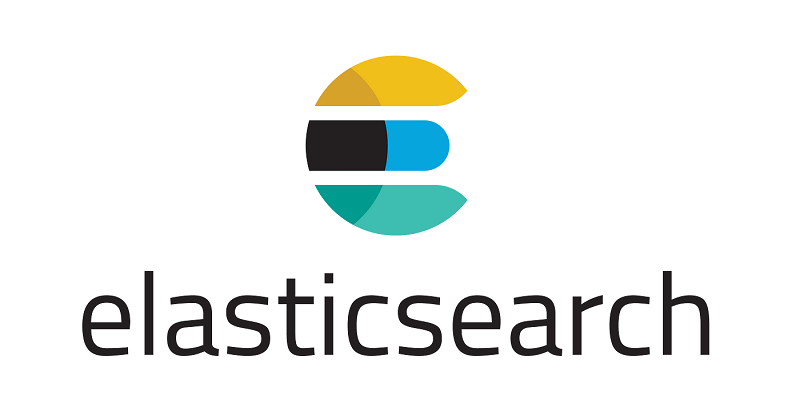Elasticsearch: A Complete Search and Analytics Tool

Searching and analyzing immense quantities of information is critical in the contemporary data-driven society. This is precisely the purpose of Elasticsearch, a robust open-source search and analytics engine. Its primary strengths are storage, searching, and analyzing various data types, including structured records and unstructured text.
It is a valuable instrument for various applications due to its versatility. Elasticsearch is utilized by security teams for real-time threat detection and by e-commerce platforms to drive lightning-fast product searches. The efficient storage and analysis of large datasets is an additional advantage for content management systems and logging platforms.
In 2010, Shay Banon and Simon Wolf were at the forefront of initiating the Elasticsearch voyage. After that, it emerged as the preeminent search and analytics engine with a broad spectrum of applications. The continuous progress in this area, in conjunction with Elasticsearch's open-source characteristics, establishes it as a solution that will endure for the foreseeable future regarding analytics and data management.

What is Elasticsearch?
The central component of the Elastic Stack is Elasticsearch, which serves as a distributed search and data engine. Elasticsearch storage of data that has been gathered, aggregated, and enhanced is facilitated by Logstash and Beats.
In addition to managing and monitoring the stack, Kibana facilitates the interactive exploration, visualization, and sharing of insights into data. Elasticsearch performs indexing, searching, and analysis.
Search and analytics for all categories of data are provided in near real-time by Elasticsearch. Elasticsearch can store and index to facilitate rapid searches, irrespective of the nature of the data (structured or unstructured, numerical or geospatial).
Identifying trends and patterns in your data is possible beyond basic data retrieval and aggregation. Elasticsearch's distributed architecture facilitates seamless deployment expansion with the growth of your information and query volumes.
How Does Elasticsearch Work?
Elasticsearch is an engine for performing scalable and robust searches constructed on the Apache Lucene library. It is engineered to process substantial data and execute rapid queries across that volume. It works as follows at a high level:
The Process of Document Ingestion
Elasticsearch indexes data in the form of JSON documents. Each document is stored as a JSON object within an index, irrespective of its type. An index comprises a compilation of documents that share common attributes.
Indexing and Examination
Elasticsearch performs content analysis and maintains the indexed documents in an optimized data structure built upon the Apache Lucene framework. Text is tokenized into individual terms during analysis; these terms are subsequently stemmed and normalized to enhance the precision of the search. This procedure is extraordinarily configurable and can be altered to meet particular needs.
Logistics and Distribution
Elasticsearch utilizes shards, the fundamental unit of scalability, to store indexed documents. Shards are distributed across cluster nodes to assure high availability and fault tolerance. Every shard is an autonomous and operational index that may be stored on any node within the cluster.
Querying and Searching
The Query DSL (Domain Specific Language) is a robust query language offered by Elasticsearch that facilitates the retrieval and searching of documents.
Individuals can conduct comprehensive text searches, apply filters to results according to diverse criteria, and implement intricate aggregations to condense data. Elasticsearch efficiently locates documents that satisfy a given query by utilizing inverted indices.
Elasticsearch Benefits
Elasticsearch distinguishes itself from competitors by providing an extensive range of advantages that address the continuously expanding requirements of contemporary data administration. Here, we explore several of its primary benefits:
High Performance
Its exceptionally quick search capabilities power Elasticsearch. By utilizing a distributed architecture, it can efficiently manage enormous datasets. Through the intelligent sharding of data across numerous nodes, Elasticsearch guarantees lightning-fast retrieval and analysis, even when dealing with terabytes of information.
Users receive nearly instantaneous search results, eliminating aggravating delays and maintaining productivity. Moreover, Elasticsearch scales horizontally without interruption. Expanding the cluster's node count enables it to efficiently manage escalating data volumes and user inquiries, rendering it an ideal resolution for organizations grappling with perpetually expanding data requirements with Elastic Cloud.
Fast Time-to-Value
In contrast to conventional data solutions that necessitate extensive setup and configuration, Elasticsearch is distinguished by its exceptionally rapid time-to-value. Due to its user-friendly interface and pre-integrated functionalities, organizations can rapidly commence operations.
The optimization of data ingestion enables users to commence data searching and analysis in a matter of minutes. The swift implementation process reduces operational interruptions and enables businesses to leverage the robust search and analytics functionalities of Elasticsearch promptly.
Complimentary Tooling and Plugins
The realm of Elasticsearch transcends the confines of its fundamental engine. An extensive collection of extensions and supplementary applications augments its functionality even further. Kibana, a widely utilized visualization application, integrates seamlessly with Elasticsearch, enabling users to generate perceptive dashboards and reports from their data.
Plugins for security provide access control at the granular level, whereas plugins for analytics enable sophisticated data exploration functionalities. The vast ecosystem enables users to customize Elasticsearch according to their requirements and processes, optimizing its utility and adaptability.
Easy Application Development
Elasticsearch demonstrates exceptional performance in the integration of search functionality into applications. The extensive documentation of its REST API enables developers to construct robust search experiences effortlessly.
The reindex API provides various capabilities, including data retrieval, indexing, and sophisticated query construction. By seamlessly integrating, development time and resources are drastically reduced, enabling developers to concentrate on the fundamental logic of the application.
Near Real-time Operations
Real-time insights are crucial in the ever-changing contemporary environment. Elasticsearch enables users to query and analyze data with minimal latency due to its near-real-time operation. This capability empowers organizations to execute data-based decisions and adapt to evolving circumstances promptly.
Security teams can utilize it to detect and mitigate threats in real time. In contrast, e-commerce platforms can employ near real-time searches to personalize product recommendations according to user behavior. This capability provides a substantial competitive edge across numerous industries by enabling work with data in near-real-time.
Core Concepts of Elasticsearch
At its essence, Elasticsearch can excel in search and analysis due to its reliance on a comprehensive set of data structures and functionalities. To comprehend the functioning of Elasticsearch, it is imperative to explore the following fundamental concepts:
Structures of Data in Elasticsearch
Elasticsearch is constructed upon the Apache Lucene framework, which efficiently stores and retrieves indexed documents using multiple data structures. Several fundamental data structures are implemented in Elasticsearch:
Documents
Documents are the fundamental element of information in Elasticsearch. The format in which these documents are stored is JSON, a flexible and human-readable data interchange format.
Documents resemble documents in a conventional database in that they comprise distinct fields housing particular pieces of information. For instance, an e-commerce platform product document may contain the following fields: product name, description, price, and category.
Fields
Every document comprises fields, which are specific data elements or attributes. Fields may contain strings, integers, dates, booleans, and additional data types. Specifying the proper data type for every field is critical to facilitate efficient data storage, retrieval, and analysis.
Furthermore, mappings can be applied to fields to specify further how Elasticsearch should index and analyze the data. Mappings can establish analyzers for text fields, configure rules for data formatting, and impact the execution of queries.
Indices
Documents are organized systematically into collections referred to as indices. Comparable to library filing cabinets, each index contains a distinct collection of documents associated with a particular subject.
Indices furnish your data with structure and organization, enabling you to manage and query it proficiently. Elasticsearch enables data categorization by creating multiple indices according to their content or intended use. For instance, distinct indices could be maintained for product data, customer data, and website logs.
Replication and Sharding
To achieve fault tolerance and scalability, Elasticsearch implements a distributed architecture. Indices are additionally subdivided into shards, which are smaller entities. The fragments function as index partitions and are dispersed across numerous nodes within the cluster (further explanation to follow).
Sharding enables the execution of search queries in parallel, which substantially enhances the efficacy of searches on extensive datasets. In addition, Elasticsearch provides replication functionality, which generates duplicates of shards on distinct nodes. This redundancy guarantees high availability and prevents data loss by ensuring data accessibility despite the failure of a node.
Searching in Elasticsearch
Elasticsearch constructs search queries utilizing Query DSL (Domain Specific Language), a robust query language. The language provides an extensive range of query types, each designed for a distinct purpose:
-
Match Query: The most fundamental form utilized to search for documents according to precise matches in particular fields.
-
Filter Query: Documents that fail to satisfy specific criteria are excluded from the search results without affecting the scoring of the remaining documents.
-
Aggregations: Aggregations enable the gathering and calculating of data to produce summaries and insights.
Full-Text Search
An inherent advantage of Elasticsearch is its capability to conduct full-text searches. This feature enables users to conduct keyword and phrase searches throughout complete documents rather than being limited to particular fields.
To accomplish this, Elasticsearch employs tokenizers and analyzers. Analyzers decompose text into searchable tokens, which are smaller units. They are capable of lemmatization (word conversion to their base form) and stemming (word reduction to their root form).
Tokenizers refine these units further by dividing the text into phrases or words according to predefined principles. This procedure enables users to search for pertinent documents utilizing natural language terms, irrespective of slight modifications in the search query.
Scoring
Elasticsearch evaluates each matched document and assigns it a score during query execution. This score indicates the relevance of the document to the query. Relevance is established through a multifactorial process involving the document's degree of correspondence with the search terms, the field where the match occurs, and any custom scoring criteria established in the mappings.
The search results prioritize documents that have obtained higher scores, ensuring that users are initially presented with the most pertinent information.
Filtering Data
In contrast to search queries, which identify pertinent documents, filter queries enable additional refinement of the results. Filter queries delete documents from search results that fail to satisfy particular criteria.
In contrast to match queries, their impact on the remaining documents' scores is negligible. One possible approach is restricting search results to products within a specified price range.
Sorting Search Results
Elasticsearch classifies search results according to their relevance score by default, whereby the most pertinent documents are presented initially. However, results can also be sorted according to particular fields. This feature enables users to rank documents according to predetermined criteria such as price, average user rating, or publication date.
Aggregations implemented in Elasticsearch
Aggregations are a robust Elasticsearch functionality that facilitates the summarization and analysis of extensive datasets. They facilitate the grouping of data, the computation of statistics, and the generation of insights from search results. The following is a summary of fundamental concepts:
Types of Aggregation: Elasticsearch provides a wide variety of aggregation categories, each of which fulfills a distinct function:
The Aggregation of Metrics
These perform statistical calculations on a collection of documents. Avg (average), sum (total), min/max (minimum and maximum values), cardinality (number of unique values in a field), and percentiles (a particular value within a sorted distribution) are some examples of statistical measures.
The Aggregations of Buckets
Documented collectively based on shared characteristics. Terms (which group documents by a particular field), range (which groups documents within predefined value ranges), and date histogram (which groups documents by date intervals) are typical examples.
-
Buckets: A bucket aggregation yields a compilation of buckets, wherein each bucket symbolizes a cluster of documents associated with a distinct value or belonging to a designated range. A document count (doc_count) and a key (the value or range it represents) are associated with each container.
-
Metrics: Metrics are implemented in containers by conducting calculations on the documents contained within each bucket. For example, one can compute the mean price contained within a bucket representing a product category or the count of distinct users within a bucket representing a particular date range. One can extract valuable insights and discern patterns within the dataset using this amalgamation of categories and metrics.
Best Practices and Performance Optimization
Getting the most out of Elasticsearch requires following best practices for data management and query optimization. Here are some important considerations:
Data Normalization Techniques
Normalizing your data entails arranging it to reduce redundancy and increase search efficiency. This typically entails splitting commonly accessed data into separate documents or employing mechanisms such as parent-child connections. Normalizing can drastically reduce document size while improving query performance, especially for complex searches.
Choosing the Right Data Types
Choosing the correct data type for each field ensures effective storage and retrieval. For example, replacing strings with integers for numerical data, such as product pricing, enables faster aggregate and filtering. Analyzing data usage patterns and selecting the best data type for each field improves storage capacity and search performance.
Indexing Strategies
How you define your new index structure greatly impacts search performance. To maximize document storage and search, define relevant mappings for your fields, such as analyzers and data formatting rules. Analyzing search patterns and adjusting index alias structure can greatly increase query speed and accuracy.
Query Caching and Optimization Techniques
Elasticsearch provides query caching methods, which can improve efficiency even further. Caching frequently conducted queries decreases cluster load and provides faster results for subsequent users running the same query. In addition, techniques such as query rewriting and slow query analysis can assist in finding and correcting inefficiencies, resulting in optimal search performance.
Organizations may guarantee that their Elasticsearch installation provides the speed, scalability, and efficiency required to realize the full potential of their data by adhering to these best practices and utilizing optimization approaches.
Elasticsearch Real-Time Use Cases
Web search, app search, log search and data analysis, application monitoring, and business analytics are among the common use cases of Elasticsearch. Numerous well-known businesses and organizations use Elasticsearch, including:
Netflix
Netflix monitors and analyzes security logs and customer support activities using the ELK Stack for various use cases. For instance, the message system they use is powered by Elasticsearch.
The company also selected Elasticsearch due to its various plugins, flexible schema, automated sharding and replication, and good extension approach. Using Elasticsearch, Netflix has grown from a few small deployments to over a dozen clusters with several hundred nodes.
eBay
eBay has developed a unique "Elasticsearch-as-a-Service" platform to enable simple Elasticsearch cluster installation on their OpenStack-based cloud platform, as numerous business-critical text-based search and analytical use cases rely on Elasticsearch as the backbone.
Walmart
Walmart tracks store performance indicators, existing data, existing index, holiday statistics, and customer purchase trends in almost real-time by utilizing the Elastic Stack to unlock the hidden potential of its data. Additionally, it uses ELK's safety measures for anomaly detection alerting, SSO security, and DevOps monitoring.
Simplify Your Elasticsearch Infrastructure with VPSServer
Leverage the capabilities of Elasticsearch to enable your organization to execute data-driven decisions rapidly. Complex, however, can be the construction and maintenance of the infrastructure required to support a robust Elasticsearch deployment. Thus, VPSServer is a valuable resource.
We provide a variety of high-performance virtual private server (VPS) plans tailored to manage the challenging workloads associated with Elasticsearch. Our dependable and scalable infrastructure guarantees the seamless operation of your search engine, and our knowledgeable support staff is available to assist at all times. Visit VPSServer to access the ideal platform to propel your Elasticsearch projects.
Frequently Asked Questions
Why do I need to configure reindex.remote.whitelist in Elasticsearch?
During reindexing operations, Elasticsearch necessitates the explicit whitelisting of the remote host to guarantee secure communication. This configuration incorporates additional protection against unauthorized intrusion into your Elasticsearch cluster.
How do I create an Elasticsearch cluster?
Before configuring an Elasticsearch cluster, the software must be installed on the servers or the cloud. Elasticsearch is available for installation via several package managers. After installation, you must configure Elasticsearch by modifying the elasticsearch.yml file to define the cluster name, node roles, network settings, and other details.
Is Elasticsearch SQL or NoSQL?
Elasticsearch falls under the NoSQL umbrella. Unlike SQL databases, which utilize a structured query language, Elasticsearch uses a distinct query language known as DSL to search and analyze data. This makes it excellent for working with huge, unstructured datasets where flexibility and quick search speeds are critical.












